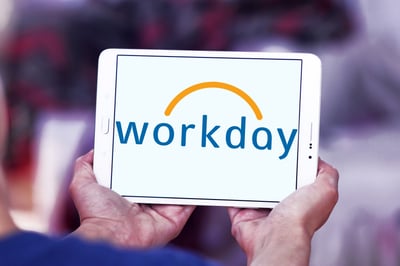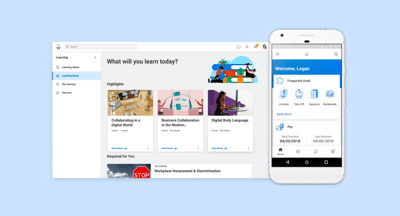In today’s rapidly evolving business landscape, customer expectations are higher than ever. Therefore, in order to meet and exceed these expectations, businesses must look to enhance their customer service.
And the best way to do just that? Optimizing your customer service training. By rolling out comprehensive training to your workforce, you empower your employees to deliver outstanding service and memorable experiences with every interaction.
Like what you hear? Then keep reading to discover 10 essential training topics and ideas to enhance your customer service.
Quick Navigation:
1. What is customer service?
2. Why is customer service important?
3. Customer service training topics
What is customer service?
Customer service is the all-encompassing service you offer to your customers. What this looks like varies from business to business, however, common customer service actions include product information and recommendation, problem-solving, and responding to general questions. Today’s consumers have the option to interact with companies across a multitude of touchpoints that include face-to-face, email and social media.
It’s important for businesses to know the difference between customer service and customer experience. Customer service is one part of the customer experience or, another way to put it, customer service is a single interaction between customer and business, whereas customer experience is the customer’s entire journey with your brand.
Why is customer service important?
Customer service is crucial because it directly impacts a plethora of business areas. Companies with outstanding service outperform those without. Let's take a closer look:
Increased customer retention
Returning customers spend 67% more on average than new ones, making it important to build loyalty. Additionally, 96% of customers say good service is important in their choice of loyalty to a brand, and 89% are more likely to make a repeat purchase after an excellent customer service experience.
Reviews and recommendations
Customer service directly impacts customers’ perceptions of your business. Great service results in great reviews, and negative interactions often lead to poor reviews. And in today’s online world, reviews are more important than ever.
Increased Revenue
The ability of CS to increase sales, foster loyalty, and generate positive recommendations results in increased revenue. In fact, businesses can grow revenue by 4%-8% when they prioritize the customer service experience.
10 customer service training topics

Product-related training
Product Knowledge
The foundation of excellent CS. With an in-depth understanding of the products you sell, your workforce can provide accurate answers to product-related questions, offer practical recommendations, and provide expert insight to your customers about the products they’re interested in.
Today’s consumers are more informed than ever, making it increasingly difficult for store associates to position themselves as experts. In fact, 83% of consumers believe they know more than store associates. But with thorough knowledge of your products and services, employees are empowered to help shoppers with every interaction.
Training tip: Utilize microlearning to increase knowledge retention. Learning the details of every single product can seem almost impossible, but breaking the knowledge down into bite-sized lessons presents the task as more manageable while accounting for our shortening attention spans.
Product demonstration
65% of humans are visual learners, meaning they need to see something happen in order to remember it. Product information is invaluable, but customers may struggle to keep up with the facts in real time.
Employees can improve customer service by taking that extra step and demonstrating how to use the product. Once you’ve finished explaining how to set up the T.V., take the time to show them. Not only does this add to your image of expertise, but consumers will also appreciate you taking the extra time to help them.
|
🧠 Training tip: Use video to train your workforce on product demonstration. Just like consumers, your employees are visual learners too and will retain information by watching someone else handle the product. Did you know that new employees watching an onboarding video are 95% more likely to retain information vs. 10% when the information is read? |
Upselling skills
Upselling is the art of convincing a customer to purchase either an upgraded product or product-related add-ons. When optimized, upselling can increase revenue by up to 30%.
However, it’s important to remember that the customer also benefits. While hearing the word ‘sales’ often conjures up the image of a shady salesman who prioritizes self-interest above all else, upselling is actually a mutually beneficial experience. When done well, upselling presents all available options to the customer and helps them make an informed decision. The sales process then becomes a consultative experience instead of a transactional one. The customer leaves, satisfied with their experience, and the business profits from the sale.
Training tip: Teach basic sales techniques. Product knowledge is important, but it’s useless if employees don’t know how to utilize it. Role-play is an effective way to account for the variety of customers your workforce will face, and enough simulations can help you build a script that acts as an upselling foundation for your team.
Store optimization training
Visual merchandising
Customer service extends beyond face-to-face interaction, and the layout of your store plays a major role in defining the customer’s experience.
We already know the majority of us prefer visual stimuli, and a further 93% of consumers list visual appearance as an important factor during the purchasing process. Optimizing your visual merchandising draws customers in, assists your workforce during interactions, and improves the overall service.
Training tip: Follow the rule of three. Grouping three items together appeals to our brains' psychological bias of positively responding to things in threes.
Store layout training
A good store layout (whether physical or virtual) can enhance the overall customer experience. Similar to visual merchandising, there’s a psychology that comes with optimizing the layout of your business, such as the customer’s inclination to turn right upon entering a store, or that consumers are easily overwhelmed by cluttered entrances.
Reinforcing the importance of an optimized store layout to your managers and employees can make a huge difference.
Training tip: Provide employees with knowledge hubs so they can access relevant information when they need it.
Tech optimization
Technology is now a vital part of customer service. Chatbots, mobile POS systems, Augmented Reality—all are leveraged to enhance the overall experience. Technology is valued by both customers and employees, ranking third on a list of factors that frontline workers say could help reduce workplace stress.
However, the wrong technological investment can act as a hindrance to your employees, with one-third of all frontline workers saying they do not have the right technological tools to do their jobs effectively. And without an optimized workforce, you can never have an optimized customer service.
Training Tip: We recommend utilizing short, snappy Guides to instruct your workers on how to use new technology. Present practical instructions in a fun and engaging way.
Customer-related training
Active listening
Listening is a skill we often take for granted, after all, we do it every day. But active listening goes beyond simply hearing the words a customer is saying, instead one must seek to understand the intent behind the words and become an active participant. This often includes reading non-verbal cues, asking open-ended questions, and paraphrasing (among many others!).
When you employ a team of active listeners, it positively impacts customer service and can even increase sales by up to 8%.
Training tip: employ quizzes to test your employees on their active listening! Have them watch a customer interaction via video and ask them what they would have done differently.
Empathy training
Empathy is the capacity to understand the emotional response of the customer, even if the problem is out of your control.
An empathetic workforce is highly valued by consumers. In fact, 96% of consumers view empathy as a key element of customer service, and 61% stopped buying from a company because a competitor offered a more empathetic experience.
Training tip: Role-play really is the best way to mimic real-life situations and improve employee-customer interactions. Variation is key and you should present your workforce with a variety of problems to prepare them for any real-life scenario.
Complaints handling
As most businesses have already discovered: it’s impossible to keep everyone happy. However, it’s how you respond to complaints that define the brand.
This is a chance for your employees to put their empathy and active listening training to the test! Identify the problem, put forward an empathetic response, and resolve the issue.
Training tip: Make training standardized. Many businesses today employ an omnichannel approach where customers can reach out over multiple channels. Consistent service is key to a thriving business, and those who roll out a strong omnichannel approach have increased customer retention and revenue.
Crisis management
Your website crashes. You're short-staffed. Your POS systems are down. Whatever it is, you’re in crisis mode. How do you respond?
Crisis management is about predicting a future crisis and formulating a plan that minimizes disruption and maintains excellent levels of service. Covid was an excellent barometer for crisis strategies, and 30% of respondents agreed they did not have a core crisis management team in place when the pandemic struck.
Training Tip: Formulate a crisis plan. Train your workforce on what steps to take when a crisis occurs. You can’t avoid a crisis forever, so preparing for one is the next best thing.
eduMe is the platform of choice for businesses looking to optimize their workforce training and enhance their customer service. By leveraging the power of microlearning and seamlessly integrating into existing technology, we make it easy to roll out engaging training at scale. After partnering with eduMe, food delivery company Takeout Central experienced a 10% increase in quality of service.
Get in touch with us now to see how we can help!






